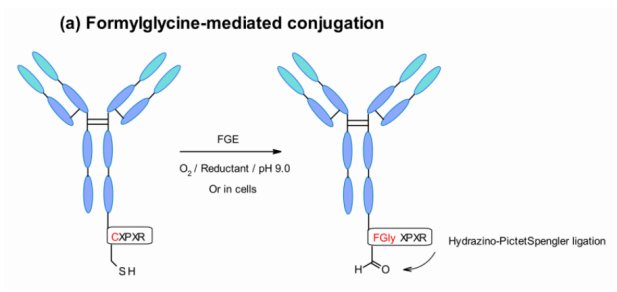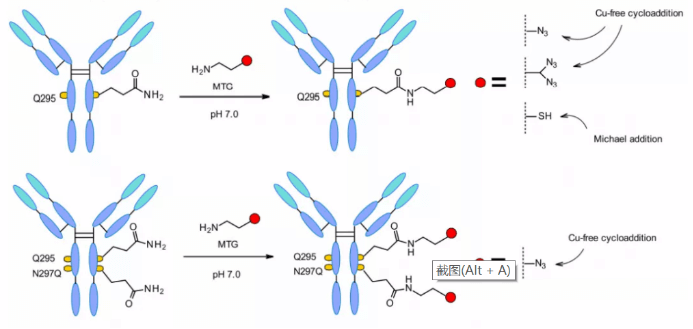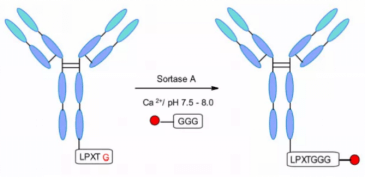Site specific biological coupling of engineered antibodies and Enzymatic method
Site specific biological coupling of engineered antibodies
Advances in bioorthogonal chemistry and protein engineering contribute to the generation of more uniform ADCs. Although there are many attachment methods available on natural monoclonal antibodies, site-specific biological coupling on engineered antibodies can more effectively control Dar and avoid changing the affinity for antigen binding. In this way, natural or unnatural amino acids are added at some positions to obtain homogeneous products with excellent pharmacokinetic and pharmacodynamic characteristics.
Enzymatic method
The attachment of payloads can be achieved in a very selective manner by inserting specific amino acid tags into the antibody sequence. These tags are recognized by specific enzymes, such as formylglycine generating enzyme (FGE), microbial transglutaminase (MTG), transpeptidase or tyrosinase, so that site-specific coupling can be performed.
Aaron et al. Explored a new site-specific coupling of aldehyde labeled proteins. The technique utilizes a gene encoded pentapeptide sequence (Cys-X-Pro-X-Arg), in which cysteine residues are recognized by FGE and co translated and oxidized to formylglycine during protein expression in cells. In this way, the engineered antibody is selectively coupled with aldehyde specific linker by hips (hydrazino Pictet – Spengler) chemical method.

Microbial transglutaminase (MTGase) strategies are also often developed for location-specific coupling. MTGase catalyzes the formation of peptide bonds between the glutamine side chain at the 295 position of the glycosylated antibody and the primary amine of the substrate. Compared with other enzyme strategies, MTG is a flexible technology and does not require peptide donors to achieve coupling. As long as the acyl receptor contains a primary amine, there is no structural restriction.

Glutamine residues naturally exist in the Fc region of each heavy chain of the McAb. After deglycosylation at position 295, glutamine residues are coupled through MTGase mediated reaction to produce a uniform ADC with Dar = 2. In order to improve the efficiency, the linker with branched chain can be coupled to double the Dar, and the mutation of asparagine at position 297 to glutamine can also increase the DAR.
NBE therapeutics developed S-based Staphylococcus aureus transpeptidase A-mediated coupling. Their strategy uses transpeptidase a (srtA) to cut the amide bond between threonine and glycine residues in the motif of lpxtg (X = any amino acid) pentapeptide. It then catalyzes the coupling of glycine related payloads with the newly formed C-terminal to form peptide bonds at physiological temperature and pH.

The method was applied to different antibodies, such as anti-CD30 and anti-HER2, and maytanine and MMAE were coupled with 5-glycine labeled linkers. Both ADCs showed similar in vitro cytotoxicity to classical coupling. Trastuzumab maytanine produced by enzymatic method completely matched kadcyla in vivo test.In another example, the ADC of efficient anthracycline toxin derivative pnu-159682 was generated by transpeptidase method. Interestingly, through this technology, the coupling efficiency is even higher than that of adcetris and kadcyla analogues. In addition, the prepared pnu-159682 ADC has high stability in vitro and in vivo, and shows more efficacy than the ADC containing tubulin targeting payload.






 View the Knowledge base of Antibody-drug Conjugate (ADC)
View the Knowledge base of Antibody-drug Conjugate (ADC)